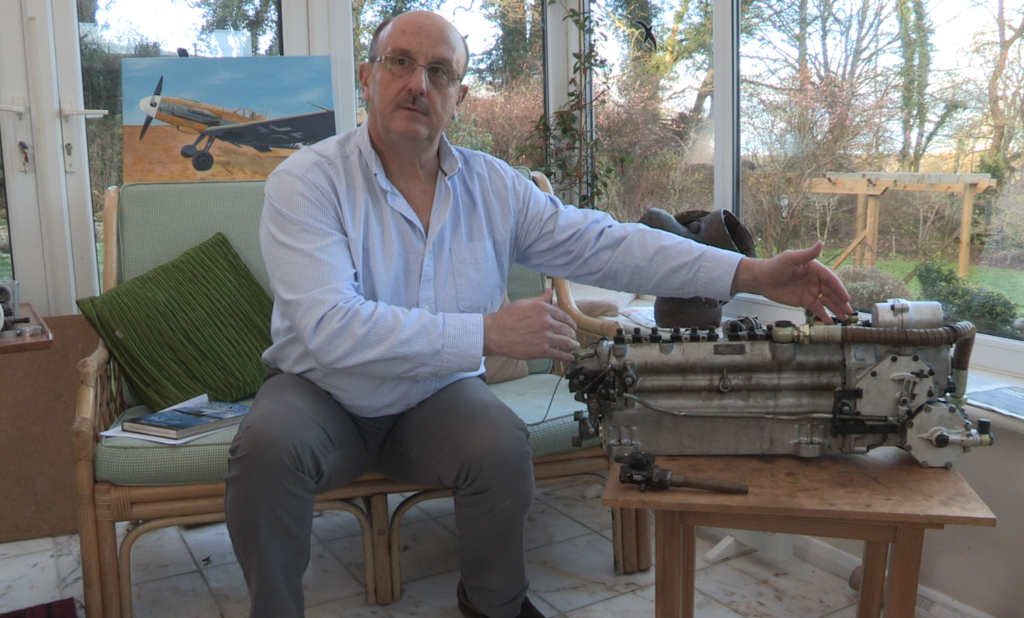Deleted member 68059
Staff Sergeant
- 1,058
- Dec 28, 2015
I`ve got so fed up with people saying "But I bet you`ve never read Stanely Hookers autobiography!" to me when I discuss the various forms of fuel injection that the British totally failed to develop before WW2, that I`ve started writing up an article for my website (not yet finished).
While I`m writing, you can find much of interest here by Chris Starr (ex. RAF Tornado pilot and restorer of the engine of Bf-109 "black-six".

For interest, here is a very interesting conclusion written by the Royal Aircraft Establishment, Farnborough, England in late 1942, comparing Merlin-46 supercharger
performance with the standard AVT carburettor, vs a jury-rigged two-nozzle fuel injection system the stuck on a test-bed.
Please note that the author of this somewhat confusingly refers to the float carburettor jets as "fuel injection tubes" in paragraph 2, and
that the "removal of the carburettor choke tubes" requires the use of a fuel injection system.

Very briefly, my conclusions will be that Hookers writings in his autobiography almost certainly only really apply to the two-stage Merlin
(where very high temperatures are experienced through the supercharger), and that the benefits of evaporating fuel through the
supercharger, did not work to anything like the same degree with the most numerous versions of the Spitfire produced (the MkV),
because the fuel could not evaporate through the blower at high altitude, due to the very low external air temperatures, and only
moderately high temperature increase through the single-stage, single-speed blower used.
This is thoroughly supported by compressor maps generated on the high-altitude supercharger test rig at Farnborough, in
fact not just suported, but I am essentially just reproducing what they found at the time, and adding some modern commentary.
While I`m writing, you can find much of interest here by Chris Starr (ex. RAF Tornado pilot and restorer of the engine of Bf-109 "black-six".

Guests Corner: Chris Starr - Calum Douglas
This section of the website is dedicated to distributing the writings of Chris Starr, former RAF Tornado pilot, RAF Tanker pilot and responsible for the restoration and maintenance of the Daimler-Benz DB605 engine of the RAF owned and (previously operated) Messerschmitt Bf109G, otherwise known...
www.calum-douglas.com
For interest, here is a very interesting conclusion written by the Royal Aircraft Establishment, Farnborough, England in late 1942, comparing Merlin-46 supercharger
performance with the standard AVT carburettor, vs a jury-rigged two-nozzle fuel injection system the stuck on a test-bed.
Please note that the author of this somewhat confusingly refers to the float carburettor jets as "fuel injection tubes" in paragraph 2, and
that the "removal of the carburettor choke tubes" requires the use of a fuel injection system.
Very briefly, my conclusions will be that Hookers writings in his autobiography almost certainly only really apply to the two-stage Merlin
(where very high temperatures are experienced through the supercharger), and that the benefits of evaporating fuel through the
supercharger, did not work to anything like the same degree with the most numerous versions of the Spitfire produced (the MkV),
because the fuel could not evaporate through the blower at high altitude, due to the very low external air temperatures, and only
moderately high temperature increase through the single-stage, single-speed blower used.
This is thoroughly supported by compressor maps generated on the high-altitude supercharger test rig at Farnborough, in
fact not just suported, but I am essentially just reproducing what they found at the time, and adding some modern commentary.
